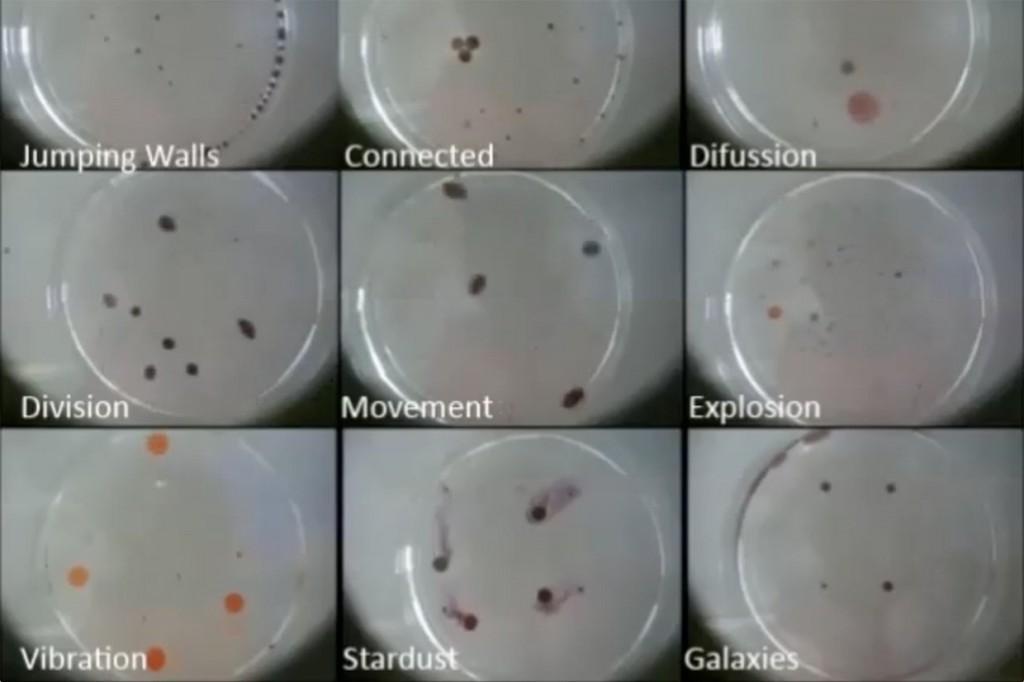 With all the talk, not to mention a multitude of sci-fi movies, about artificially intelligent ‘beings’ taking over the planet one day and killing off the human race as we know it, it’s nice to think about these quite innocent and beneficent creations exploring the origins of human life for us, rather than hatching plots to end it or enslave us (more time for that later, I guess).
With all the talk, not to mention a multitude of sci-fi movies, about artificially intelligent ‘beings’ taking over the planet one day and killing off the human race as we know it, it’s nice to think about these quite innocent and beneficent creations exploring the origins of human life for us, rather than hatching plots to end it or enslave us (more time for that later, I guess).
Currently, 3D printed robots at Glasgow University are nurturing and farming synthetic cells that can remain alive, and display evolutionary qualities, as we humans continue the ongoing effort to understand our place in the universe, and how we came to be here to begin with.
While this might sound complex, many of the most genius ideas boil down to simple concepts in the end. For this project, the chemists are using a RepRap 3D printer and a Playstation camera to capture images for analysis.
“Right now, evolution only applies to complex cells with many terabytes of information but the open question is where did the information come from? We have shown that it is possible to evolve very simple chemistries with little information,” said Professor Lee Cronin, from the department of chemistry at Glasgow University.
The robots are working on the premise that a chemical form of natural selection may have been what formed on our planet billions of years ago, with the holy grail for a project like this—and always the ultimate goal—being to discover ‘the god molecule,’ which is one simple system of molecules that can go on to form a living cell. “With the robot system we are a lot closer to having the hardware to look for it. Now we are building a theory to focus on what type of chemicals or molecules would be best to start,” says Cronin.
The robot fills Petri dishes with the following chemicals suspended in an alkaline solution: 1-penatol, 1-octanol, diethyl phthalate and either dodecane or octanoic acid. It places the droplets in different patterns each time, with the Playstation taking pictures, documenting each random configuration, as each set of droplets reacts differently. The most robust molecules are extracted from each experiment and used in the next. Survival of the fittest. And so on. And so on.
“This is very cool as it is the first time that robot-assisted evolution has been done in chemistry. And this is the first time that chemistry has been evolved outside of biology. This shows that it is possible, with robotic help, to evolve cells outside of biology,” Professor Cronin says.
The 3D printed robot gets the experiment ready, completes it, and even cleans up. It never has the option of thinking about getting tired, so the sky is the limit with working on the process into infinity. The algorithm in their last experiment was used to look at 17 million unique combinations of reactions. One might have difficulty hiring an intern or a teenager after school to perform this type of laborious experiment, considering to begin with, that it would take them several lifetimes to complete.
“By hacking together this kit we have in effect built a highly sophisticated machine that can fully automate the life cycle of a chemical protocell model. We’ve then used the robot to explore lots of different types of ingredients to try and come up with interesting recipes that show ‘life-like’ behaviours,” Cronin says.
The chemists hope that they will have findings that may help in the production of drugs, chemicals and a variety of systems to help the environment. What do you think of these experiments and the 3D printed robots being employed to do such enormous experimental tasks that would be otherwise impossible? Tell us about it in the 3D Printed Robots and Synthetic Cells forum over at 3DPB.com.
Subscribe to Our Email Newsletter
Stay up-to-date on all the latest news from the 3D printing industry and receive information and offers from third party vendors.
You May Also Like
NSF Awards Kentucky $1M for Advanced Manufacturing
The National Science Foundation has awarded a $1 million grant to the University of Louisville for the Advancing Manufacturing and Building Construction Technologies (NSF AMT) project. This initiative is part...
3D Printing News Briefs, May 11, 2024: 3D Printed Stent, Tower, Sculptures, & More
We’re starting off with medical research in today’s 3D Printing News Briefs, as researchers in Korea used CT images and 3D printing to fabricate an educational simulator for a mastoidectomy....
3D Printing Unpeeled: Wind Turbines, Probiotics and Lenses
TPI Composites, ORNL and Ingersoll Rand are working to make wind turbine tooling segments that can be 18.3 meters long. These elements also include resistive wires that help keep the...
Tethon 3D Releases Cost-effective Bioprinter
Tethon 3D, known for its ceramic-loaded DLP materials, custom resins, and DLP 3D printers, has recently released a bioprinter. Vat polymerization printers like DLP systems have been widely used by...


































